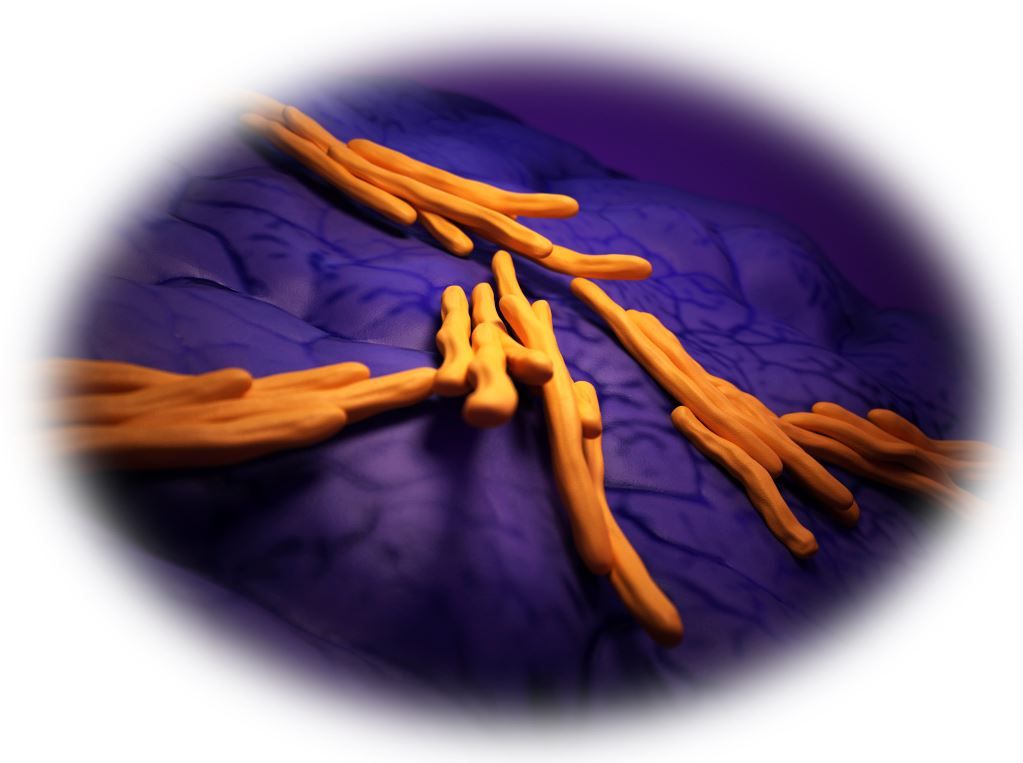Antibiotic-resistant Tuberculosis Reversed by New Compound
Isoniazid resistance in TB may be prevented and even reversed by a small newly identified molecule called C10, according to a recent study.
Mycobacterium tuberculosis

Researchers have identified a compound called C10 that may improve the ability of the frontline antibiotic isoniazid (INH) to kill tuberculosis (TB) bacteria. Results also suggest that the compound may prevent and even reverse Mycobacterium tuberculosis resistance to INH.
Results were recently published online in the Proceedings of the National Academy of Sciences.
“We have a discovered compound that is able to reverse INH resistance in M. tuberculosis, which was not previously known to be possible. These findings highlight that we may be able to overcome the resistance problem to this frontline antibiotic,” senior author Christina Stallings, PhD, of Washington University School of Medicine in St. Louis, Missouri, told Patient Care Online via email.
Reversal of INH resistance with C10 may mean that some patients could use INH again, even after having developed resistant infections.
The study is preliminary and tested C10 on bacteria grown in the lab. If further studies in animals and humans confirm the results, the compound could potentially simplify and decrease the current length of TB treatment (6 months). The protracted treatment period usually requires an infectious disease specialist as the primary healthcare professional. It also contributes to problems with treatment compliance and the emergence of drug-resistant TB.
“This is not a drug to be used in the clinic yet, but reveals a pathway for developing a new strategy to treat drug resistant tuberculosis,” Dr Stallings added.
Next: C10 blocks TB-protective biofilms
C10 blocks TB-protective biofilms M. tuberculosis kills more people each year than any other microbe. Drug resistance is an increasing problem in the worldwide TB epidemic. Most commonly, M. tuberculosis develops resistance to INH, which can lead to treatment failure, relapse, and development of multidrug-resistant TB.
Researchers used a novel chemical approach to test 91 compounds with chemical structures that may prevent M. tuberculosis from withstanding stresses it encounters in the human body. Traditionally, scientists have used a screening approach for compounds that kill TB.
Using the new approach, they identified C10, which blocks the ability of TB to withstand low-oxygen environments. Normally, when TB encounters low-oxygen environments within the human body, it forms biofilms that allow it to survive. Biofilms also help M. tuberculosis become resistant to antibiotics. Tests showed that C10 blocked the ability of M. tuberculosis to form biofilms.
Additional experiments showed that adding C10 to INH appeared to make M. tuberculosis more sensitive to being killed by INH. In the presence of C10, a smaller amount of INH was needed to kill the bacteria.
Next: Compound may thwart INH resistance
Compound may thwart INH resistance
Results also suggested that C10 may decrease the development of antibiotic resistance. When the TB bacteria were grown under typical conditions without C10, 1 out of 1 million bacteria became resistant to INH. But when C10 was added to INH, no drug resistance emerged.
In further experiments, researchers looked at TB bacteria with mutations in the katG gene, which allows them to survive in the presence of INH. However, these mutant bacteria died off when C10 was added to INH, suggesting C10 may help reverse INH resistance.
The ability of C10 to improve sensitivity to antibiotics, as well as prevent and reverse antibiotic resistance appeared to be limited to INH. Tests in rifampicin, streptomycin, and ethambutol suggested that C10 does not improve their ability to kill M. tuberculosis.
Further research is needed to test C10 in animals and humans, and to understand how C10 blocks biofilm formation.
Source: Flentie K, Harrison GA, Tükenmez H et al. Chemical disarming of isoniazid resistance in Mycobacterium tuberculosis. Proc Natl Acad Sci U S A. 2019;116:10510-10517. doi: 10.1073/pnas.1818009116. https://www.pnas.org/content/116/21/10510 (full text requires subscription)